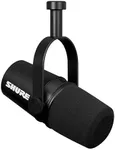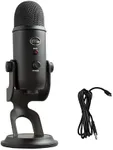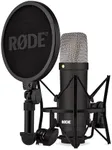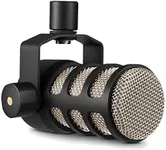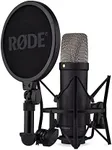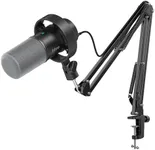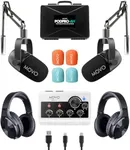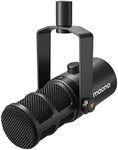Buying Guide for the Best Podcast Microphones
Choosing the right podcast microphone is crucial for ensuring high-quality audio for your listeners. The right microphone can make your voice sound clear and professional, which is essential for keeping your audience engaged. When selecting a podcast microphone, consider the following key specifications to find the best fit for your needs.Microphone TypeMicrophones come in different types, with the most common being dynamic and condenser microphones. Dynamic microphones are durable and handle high sound pressure levels well, making them ideal for loud environments or live settings. Condenser microphones are more sensitive and provide a higher level of detail, which is great for studio recordings. If you are recording in a controlled, quiet environment, a condenser microphone might be the best choice. For more versatile or on-the-go recording, a dynamic microphone could be more suitable.
Polar PatternThe polar pattern of a microphone determines how it picks up sound from different directions. The most common patterns are cardioid, omnidirectional, and bidirectional. Cardioid microphones pick up sound primarily from the front, which is ideal for solo podcasting as it minimizes background noise. Omnidirectional microphones capture sound equally from all directions, which can be useful for group discussions or interviews. Bidirectional microphones pick up sound from the front and back, making them suitable for face-to-face interviews. Choose a polar pattern based on your recording setup and the number of participants.
Frequency ResponseFrequency response refers to the range of frequencies a microphone can capture. A flat frequency response is ideal for capturing a natural and accurate sound, while a tailored frequency response can enhance certain frequencies, such as the human voice. For podcasting, a microphone with a frequency response that emphasizes mid-range frequencies (where the human voice resides) can make your voice sound clearer and more present. Consider your voice type and the sound you want to achieve when evaluating frequency response.
ConnectivityMicrophones can connect to recording devices via USB or XLR. USB microphones are easy to use and connect directly to your computer, making them a great choice for beginners or those who want a simple setup. XLR microphones require an audio interface or mixer, which can provide better sound quality and more control over your audio. If you are just starting out or prefer a straightforward setup, a USB microphone might be the best option. For more advanced users or those seeking higher audio quality, an XLR microphone is worth considering.
Build QualityThe build quality of a microphone affects its durability and longevity. A well-built microphone can withstand regular use and transportation without compromising sound quality. Look for microphones made from sturdy materials like metal, and consider features like shock mounts and pop filters that can protect the microphone and improve recording quality. If you plan to travel with your microphone or use it frequently, investing in a durable model is important.
Additional FeaturesSome microphones come with additional features like built-in headphone jacks for real-time monitoring, gain control, and mute buttons. These features can enhance your recording experience by providing more control and convenience. Consider what additional features might be useful for your podcasting needs. For example, real-time monitoring can help you catch issues during recording, while gain control allows you to adjust the microphone's sensitivity on the fly.

